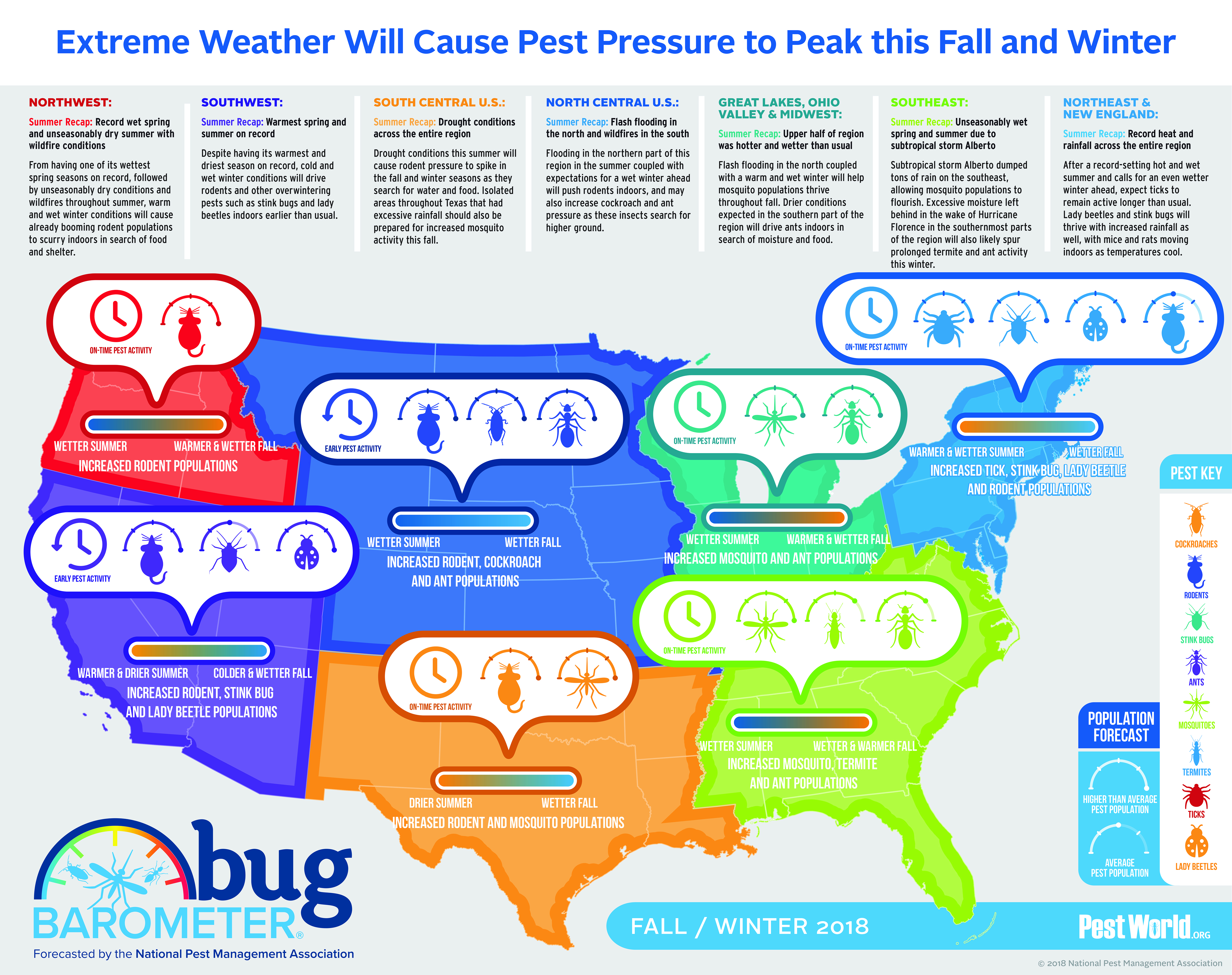Utilize Your Knowledge Of Rodent Nesting Actions To Outsmart These Pest Administration Methods
Utilize Your Knowledge Of Rodent Nesting Actions To Outsmart These Pest Administration Methods
Blog Article
Authored By-McDonough Doyle
When it comes to rodent control, comprehending usual rodent behavior is essential to efficiently managing problems. Did you recognize that rats have some fascinating nesting routines that might stun you? By discovering their detailed habits, you can get useful understandings into how to deal with rodent issues in a much more strategic and efficient way. So, allow's decipher the mysteries behind these animals' activities and learn how to outsmart them in your rodent control initiatives.
Rat Nesting Habits
When observing rats in their all-natural habitat, you'll notice that they proactively look for products to construct their nests. Rodents, such as computer mice and rats, are resourceful animals that use a range of items like branches, leaves, paper, and material to build their homes. They're thorough in their nest-building procedure, usually lining their nests with softer products like hair or feathers to create a comfortable atmosphere.
Rats choose to construct their nests in surprise and protected areas to safeguard themselves and their young from killers. Typical nesting places include wall tooth cavities, attic rooms, basements, and also within insulation products. By building their nests in these remote locations, rats can securely elevate their children far from prospective threats.
It is vital to recognize the nesting routines of rodents when carrying out control steps. By disrupting their nests or getting rid of products, you can inhibit rats from developing a presence in your house or home. Proper hygiene and sealing entry points are additionally vital action in stopping rodent infestations.
Rat Feeding Patterns
After observing rodents' nesting practices, it comes to be noticeable that their feeding patterns play a vital role in their every day lives and actions. Rodents, including mice and rats, are opportunistic feeders, implying they'll eat whatever food source is conveniently offered. https://www.mypmp.net/2023/03/24/petti-pest-control-opens-2-virginia-locations/ , liking to forage for food during the cover of night to stay clear of killers.
Rodents have a diverse diet, varying from grains, seeds, fruits, and vegetables to bugs, nuts, and also tiny animals. This adaptability in their food selections permits them to flourish in numerous environments, including metropolitan areas where human food resources are plentiful.
Their feeding patterns aren't only driven by appetite however additionally by the requirement to accumulate food for times of shortage. This habits is specifically visible to prepare for winter season or when nesting. Rats are understood to hoard food in their nests or burrows, guaranteeing a continuous food supply. Recognizing their feeding patterns is essential in carrying out effective rodent control steps to disrupt their food sources and stop invasions.
Rodent Activity and Traveling
Rats navigate their surroundings with dexterity and stealth, using their eager senses to relocate quickly via their environments. These creatures are proficient mountain climbers, able to scale walls and upright surface areas effortlessly. They can likewise squeeze through remarkably tiny openings, making it vital to seal off any type of potential access points in your house.
When it pertains to taking a trip, rodents tend to adhere to acquainted courses, creating tracks along wall surfaces or skirting the edges of rooms. They're creatures of habit, frequently staying with these developed paths as they forage for food or discover their environments.
Rats are known for their nocturnal practices, so you may hear them scampering around in the evening as they look for food and water. https://www.pehub.com/tscp-backed-pestco-buys-pest-control-services-provider-5-star/ are quick and erratic, enabling them to dart in and out of view in the blink of an eye.
Understanding how rats relocate and take a trip can aid you determine potential problem locations in your home and take proactive steps to avoid these pests from acquiring a foothold.
Final thought
As you work to manage rodents in your home, remember that comprehending their actions is vital. By identifying their nesting behaviors, feeding patterns, and motion, you can efficiently avoid infestations.
Together, by taking positive steps to remove food sources and seal access points, you can disrupt their acquainted courses and force them to look for new areas, ultimately minimizing the probability of rodent visibility in your home.
